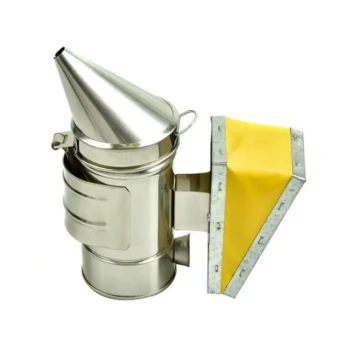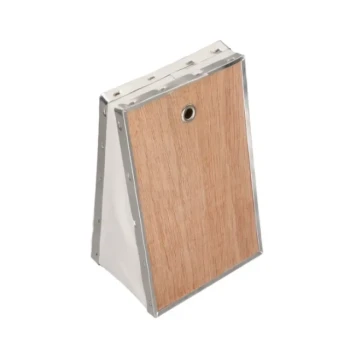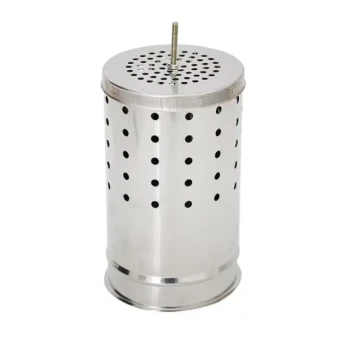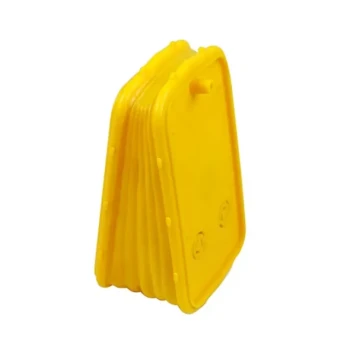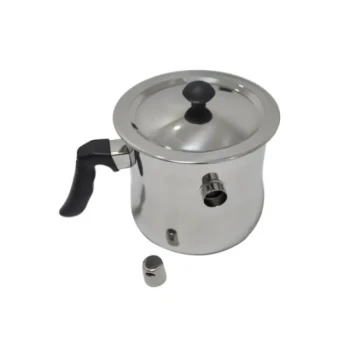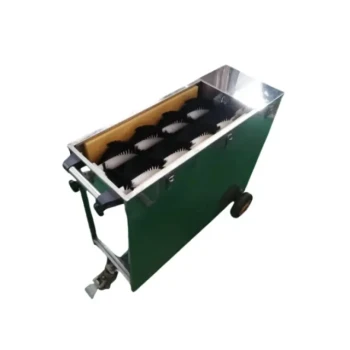The "best" fuel for a smoker depends entirely on its purpose. The ideal choice for a culinary smoker preparing food is fundamentally different from the fuel required for a beekeeper's smoker used to calm bees. For cooking, the fuel is an ingredient that provides both heat and flavor, with charcoal and hardwood being the standards. For beekeeping, the fuel must produce a cool, dense, and non-toxic smoke to pacify bees without harming them, using materials like pine needles or burlap.
Your choice of fuel is not just a technical decision; it's a choice about the fuel's core function. For cooking, the fuel adds flavor and character. For beekeeping, the fuel is a tool for safe and gentle animal handling.
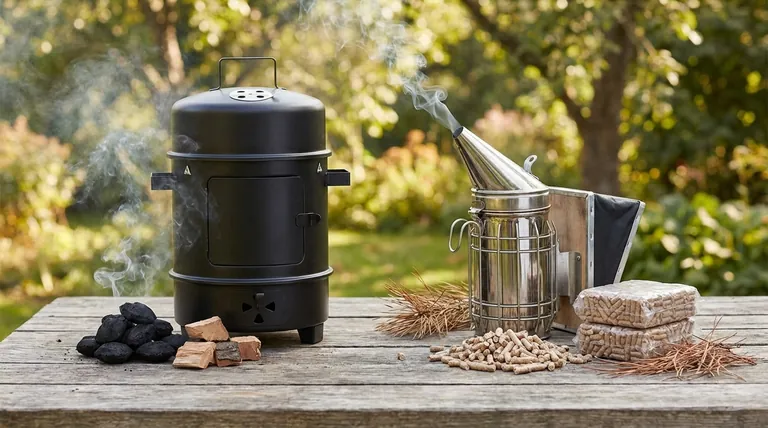
Fueling a Culinary Smoker for Flavor and Heat
When smoking food, your fuel source is the foundation of both your temperature control and your final flavor profile. The goal is to generate consistent, low-and-slow heat and clean, aromatic smoke.
Charcoal: The Foundation for Consistent Heat
Charcoal is the most common fuel for backyard smokers because it provides a stable, long-lasting heat source with a neutral flavor base. It is created by burning wood in a low-oxygen environment.
You will primarily encounter two types: briquettes, which are uniform and burn very predictably, and lump charcoal, which burns hotter and less uniformly but is more natural. Many champion pitmasters use charcoal as their primary heat source.
Wood: The Source of Authentic Smoke Flavor
While charcoal provides the heat, wood provides the classic smoke flavor. Wood is rarely used as the sole fuel source because it can be difficult to manage temperature, but it is essential for flavor.
Wood is added to a charcoal fire in the form of chips, chunks, or pellets. The type of wood dictates the flavor, from strong hickory and mesquite to milder fruitwoods like apple and cherry.
Fueling a Bee Smoker for Safety and Calm
In beekeeping, the smoker is not used for heat. Its sole purpose is to produce a thick, cool smoke that calms the honey bee colony, making hive inspections safer for both the beekeeper and the bees.
The Core Principle: Cool, Non-Toxic Smoke
The smoke works by masking the alarm pheromones that guard bees release, preventing a full-scale defensive response from the hive. Therefore, the fuel must be non-toxic to the bees and burn slowly and coolly to avoid agitation or harm.
Kindling: Getting the Smoke Started
To get a bee smoker lit properly, you need a kindling fuel that ignites easily. Excellent options include dry, natural materials like pine needles, wood shavings (not dense sawdust), or even dried grasses.
Long-Burning Fuels: Sustaining the Smoke
Once the kindling is lit, you add a denser fuel on top to sustain a long burn. Good choices include untreated burlap, all-cotton cloth scraps, wood pellets intended for pellet stoves, or specialty smoker fuels. These materials smolder for a long time, producing the desired thick smoke.
Understanding the Trade-offs and Safety Risks
Choosing the wrong fuel can ruin a meal or, far worse, harm a living colony. Understanding the risks is critical.
For Culinary Smokers: Dirty Smoke
The primary risk in food smoking is producing "dirty smoke." This happens when fuel smolders inefficiently at a low temperature, creating acrid, bitter-tasting compounds that ruin the food. The goal is always a clean, thin, blue-tinged smoke, not thick white smoke.
For Bee Smokers: The Critical Non-Toxicity Rule
This is the most important rule in beekeeping. Never burn anything that could release toxic fumes into the hive. This can sicken or kill the entire colony.
Avoid any chemically treated wood, paper with colored inks or glues, plastics, synthetic fabrics, or plants you cannot identify. Materials like poison ivy are extremely toxic when burned. Stick to known, safe, and natural fuel sources.
Choosing the Right Fuel for Your Goal
Your final decision should be guided by your specific application.
- If your primary focus is cooking flavorful barbecue: Use a quality charcoal base for consistent heat and add hardwood chunks or chips to create the authentic smoke flavor you desire.
- If your primary focus is safely managing a beehive: Use clean, dry, natural materials like pine needles or untreated burlap that are proven to burn slowly and produce a cool, dense, non-toxic smoke.
Ultimately, selecting the right fuel is about understanding its purpose—whether as a key ingredient for flavor or as a critical tool for safety.
Summary Table:
| Purpose | Best Fuel Options | Key Goal | Critical Risks |
|---|---|---|---|
| Culinary (BBQ) | Charcoal Briquettes, Lump Charcoal, Hardwood Chunks/Chips | Consistent heat & clean smoke for flavor | Dirty, acrid smoke from inefficient burning |
| Beekeeping | Pine Needles, Untreated Burlap, Wood Pellets, Cotton Rags | Cool, dense, non-toxic smoke to calm bees | Toxic fumes from treated woods, plastics, or synthetics |
HONESTBEE: Your Partner in Beekeeping Success
For commercial apiaries and equipment distributors, choosing the right fuel is just the beginning. HONESTBEE supplies professional-grade beekeeping supplies and equipment through wholesale-focused operations, ensuring your smoker—and your entire operation—runs safely and efficiently.
Let us help you protect your colonies and maximize your productivity. Contact our expert team today to discuss your wholesale needs.
Visual Guide
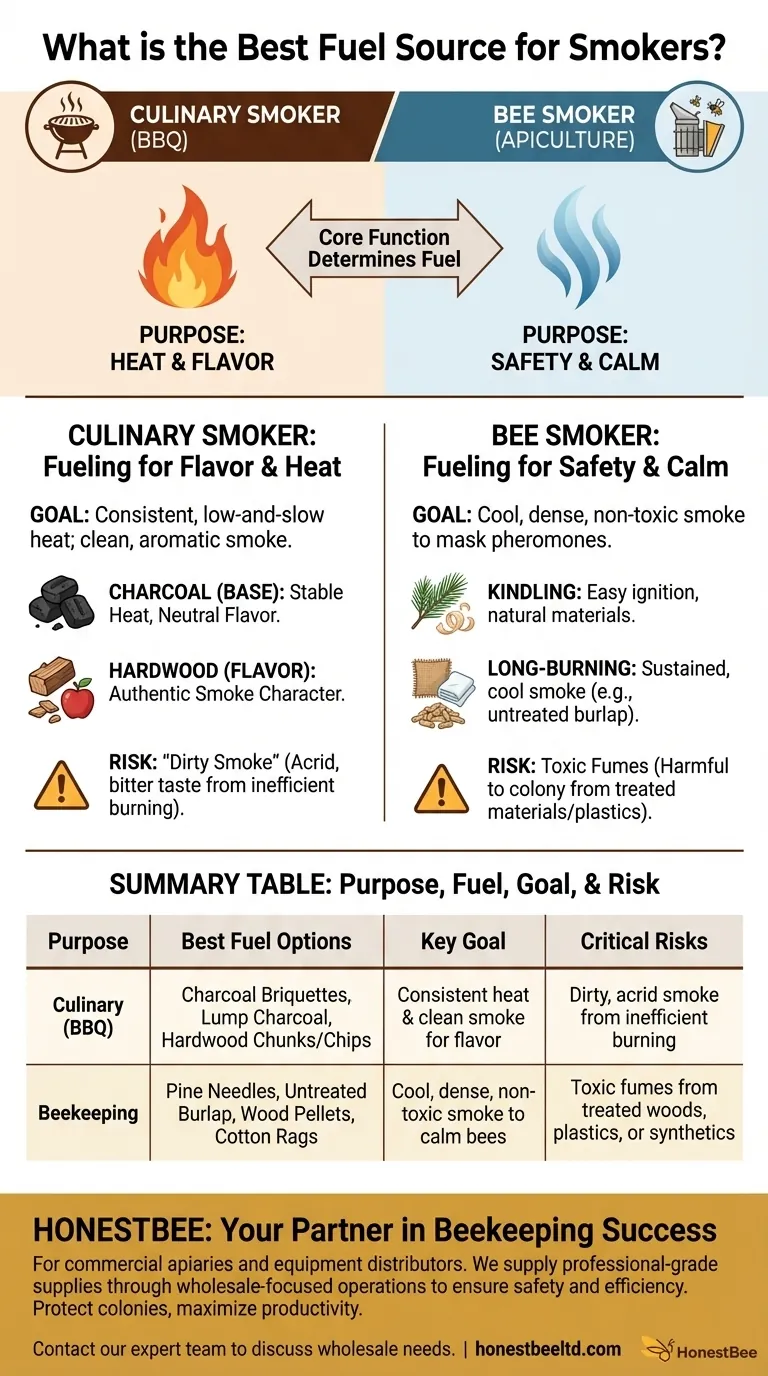
Related Products
- 54-Piece Smoker Fuel Pellets for Beekeeping Beehive Smoker Fuel
- Premium Traditional Copper Bee Smoker with Bellows
- Economy Galvanized Beekeeping Honey Bee Smoker for Wholesale
- Stainless Steel Honey Bee Smoker Hive and Honeycomb Smoker for Beekeeping
- Professional Bee Smoker with Elongated Spout and Durable Bellows for Beekeeping
People Also Ask
- What fuels are recommended for beehive smokers? Master the Art of Calm, Controlled Inspections
- What is the importance of fuel in a bee smoker? Ensure Cool, Calming Smoke for Your Hive
- What is the best material for a bee smoker? Choose the Right Fuel for a Calm Hive
- What can I use for bee smoker fuel? Choose Safe, Natural Materials for a Calm Hive
- How should you start the fire in a bee smoker? A Step-by-Step Guide for a Calm Hive





